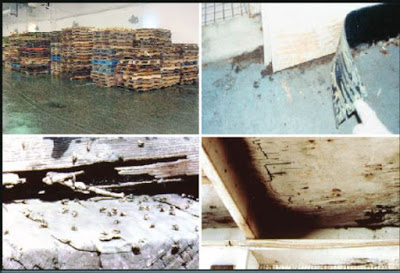GMP standard in factory construction
Workshops, food, pharmaceuticals, medical equipment … should be designed in accordance with GMP standards, and must be ensured in the course of maintenance and repair. piercing, to avoid the case of not meeting the standard.
Maintanance of facilities:
GMP standards: The plant must have appropriate architecture and design, creating conditions for maintenance and hygiene processes in the production of products. This general GMP requirement covers a number of different conditions and standards related to pest control, construction and maintenance of works, including:
Background, wall, ceiling:
As required by GMP standards, companies and factories must be built to ensure that floors, walls and ceilings are relatively clean and in good use. In addition to visible pests such as insects such as rodents, there are many smaller and difficult to see organisms such as insects or rodents, which have many smaller and more difficult organisms. visible can damage processed products. These types are called microorganisms such as bacteria and fungi – These types can appear on the surface of floors, walls and ceilings. Therefore, GMP requires your factory to be designed and built so that products, product surfaces, packaging materials are not contaminated and contaminated.
You wonder?
Is the factory’s floor, wall and ceiling constructed of durable materials, not corroded, impermeable and easily hygienic?
Floors, walls, ceilings and doors in areas of transporting and storing products are not water-proof, easy to clean. The selected material must not be fragile, scratched or easily corroded when stored, displayed, sanitized or under normal use conditions. The areas between the roof and the wall need waterproof sealant to prevent water, the debris of the product does not accumulate in any area or above the wall or under the floor
Even small debris on walls or floors can fall into the product and it is really a favorable environment for microorganisms to grow. These fragments or holes can lead to food poisoning. These places are also considered to attract dangerous animals such as insects and other rodents.

Acceptable materials for floor, ceiling, and ceiling
Conditions and materials are not accepted
GMP TV: Oxidizing materials or excessive use of rusted steel will not be allowed for doors, floors, or walls because they are always contaminated.
The conditions as shown below do not meet the requirements set by GMP
Repair and maintenance
Damaged floors, walls, ceilings or wood works provide refugees, nesting, breeding for harmful types and even they can spread to the entire building. Damaged places should be replaced and repaired as soon as they are found.
The picture below describes the condition of not meeting GMP

What you can do
In order to meet GMP standards, floors, walls and ceilings are in good condition, hygiene to avoid food contamination, food contact surfaces or packaging materials you need.
- Evaluate materials and condition of all floors, walls and ceilings
- Repair or replacement of areas made of inappropriate, damaged, or non-hygienic materials
- Regularly check the status of floors, walls and ceilings to promptly handle damaged or inappropriate locations
How to check:
Conduct daily inspections of the status of all areas of the plant. Although the current GMP standard does not require monitoring records, you should still keep a record of your test use records. Things needed to repair damage. You should also take notes
Prevent contamination by condensation and leaks
GMP standards: Plants and facilities are constructed to prevent leakage or condensation from overhead furniture, pipes, cooling equipment from contaminated products, product contact surfaces or packaging materials
Human pathogens can grow rapidly in wet or steamy environments on food contact surfaces. You must ensure no leaks, condensation contaminates the product
Prevention strategy: Condensation is often combined with high humidity in furniture. Proper ventilation, air circulation and temperature control are essential to prevent condensation on ceiling walls, overhead pipes, sprinklers or other areas.




